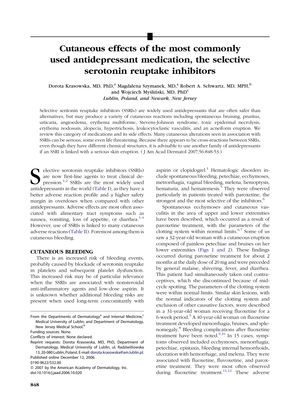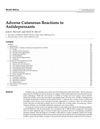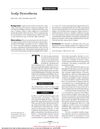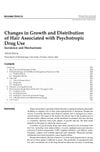Cutaneous Effects of the Most Commonly Used Antidepressant Medication, the Selective Serotonin Reuptake Inhibitors
December 2006
in “
Journal of The American Academy of Dermatology
”

TLDR Antidepressants called SSRIs can cause skin problems, bleeding risk, and other side effects.
In the 2007 study by Krasowska et al., selective serotonin reuptake inhibitors (SSRIs) were associated with various skin reactions, including serious conditions like Stevens-Johnson syndrome and toxic epidermal necrolysis, as well as alopecia and other skin issues. SSRIs were also linked to hematologic complications like increased bleeding risk due to their impact on platelet function, which are typically reversible after stopping the medication. Additionally, SSRIs may cause noncutaneous side effects such as galactorrhea, extrapyramidal symptoms, and an increased risk for conditions like osteoporosis and breast cancer. The study suggests that the incidence of these side effects is proportional to the number of patients taking SSRIs and underscores the need for awareness of potential adverse reactions when prescribing these drugs. The number of participants in the study was not mentioned.



